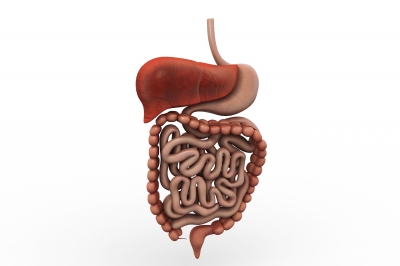Diverticulitis of the Colon
Diverticulitis of the Colon

Image courtesy of cuteimage at FreeDigitalPhotos.net
Diverticulosis is very common, being found in more than half of Americans over the age of 60. Only a small percentage of these people will develop the complication of diverticulitis. Diverticulitis is caused by inflammation or a small perforation with a diverticulum. Direct risk factors for diverticulitis are not known, but they may include older age or a low fiber diet. To prevent diverticulitis, eat regular, nutritious meals containing high fiber foods, such as fruits and vegetables. It is also vital to drink plenty of water and to watch for changes in bowel movements, get enough rest and sleep, and to avoid foods such as popcorn.
Diverticulitis of the Colon
Diverticulitis typically causes pain, tenderness, and fever, but unlike diverticulosis, diverticulitis does not generally cause gastrointestinal bleeding. If a doctor has diagnosed diverticulosis, a diagnosis of diverticulitis may be based almost entirely on the symptoms. Many other conditions involving the large intestine and other organs in the abdomen and pelvis can cause symptoms similar to diverticulitis. These symptoms are similar to appendicitis, colon or ovarian cancer, an abscess, which is a pus filled pocket of infection, and non-cancerous growths on the wall of the uterus.
Diverticulitis occurs when bacteria get trapped in the pouches. This leads to infection or inflammation. No screening is available at this time for diverticulitis. Starting at age 40, a procedure called a flexible sigmoidoscopy may be recommended every 3 to 5 years or a colonoscopy every 10 years as a screening exam for cancers of the colon and rectum. Both flexible sigmoidoscopy and colonoscopy involve using a flexible tube with a lighted viewing instrument to see inside the large intestine. These exams are often able to reveal diverticula if they are present. Treatment after recovery from an attack of diverticulitis is aimed at preventing another attack.
More serious complications include diverticulitis, abscess in the pelvis, colon obstruction, and bacterial peritonitis, plus bleeding in the colon. A diverticulum can become infected with bacteria and ruptures, causing diverticulitis. Fever, tenderness, and pain of the lower left abdomen are common symptoms. Constipation or diarrhea may also occur. A collection of pus can develop around the inflamed diverticulum, which leads to the formation of an abscess, usually in the pelvis. On rare occasions, the inflamed diverticula can erode into the urinary bladder, which causes a bladder infection and passing of gas during urination. Inflammation of the colon may also lead to bowel obstruction. On rare occasions, a diverticulum ruptures freely into the abdominal cavity causing life threatening infection caused peritonitis.
No screening is available at this time for diverticulitis. Starting at age 40, a procedure called a flexible sigmoidoscopy may be recommended every 3 to 5 years or a colonoscopy every 10 years as a screening exam for cancers of the colon and rectum. Both flexible sigmoidoscopy and colonoscopy involve using a flexible tube with a lighted viewing instrument to see inside the large intestine. These exams are often able to reveal diverticula if they are present. Treatment after recovery from an attack of diverticulitis is aimed at preventing another attack. This treatment may include getting plenty of fluids daily, gradually increasing the amount of fiber in the diet through fruits, vegetables, wheat bran, and the regular use of a fiber supplement. It is also highly recommended that regular doctor visits are conducted to monitor the condition.


